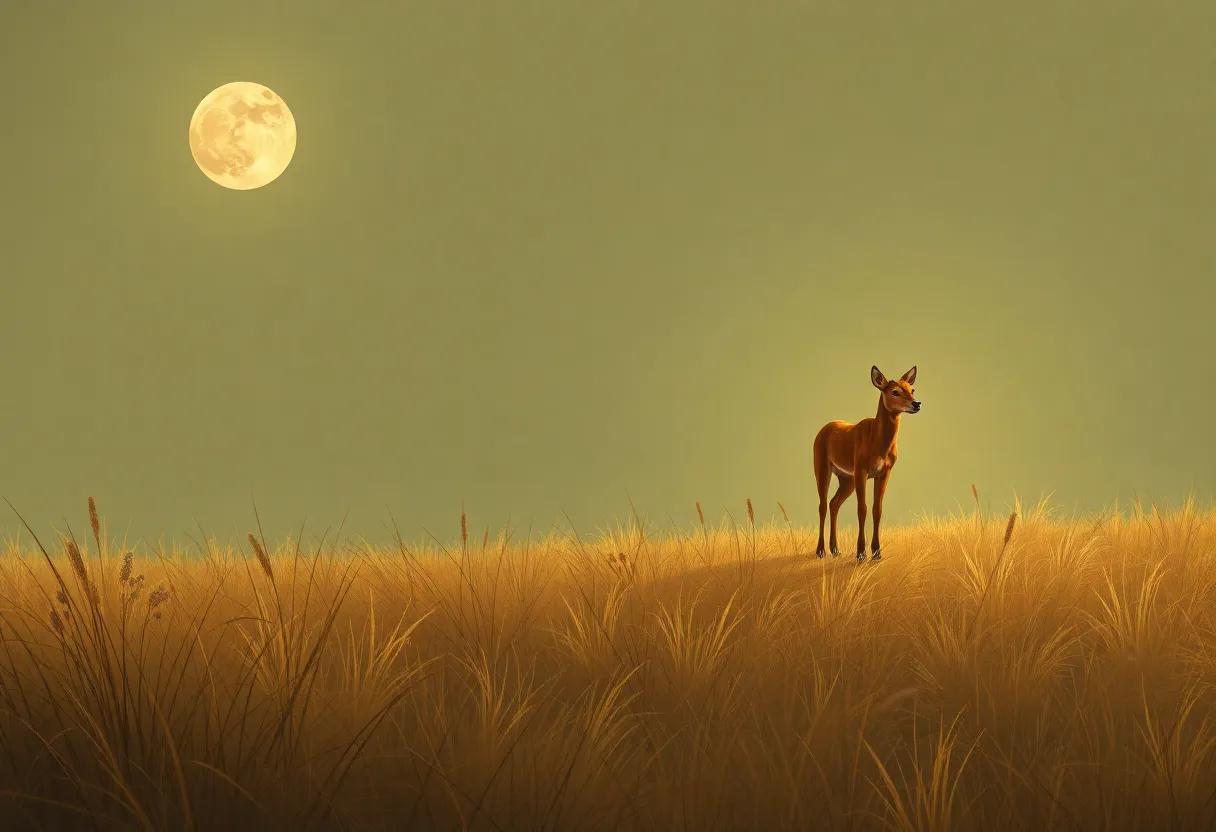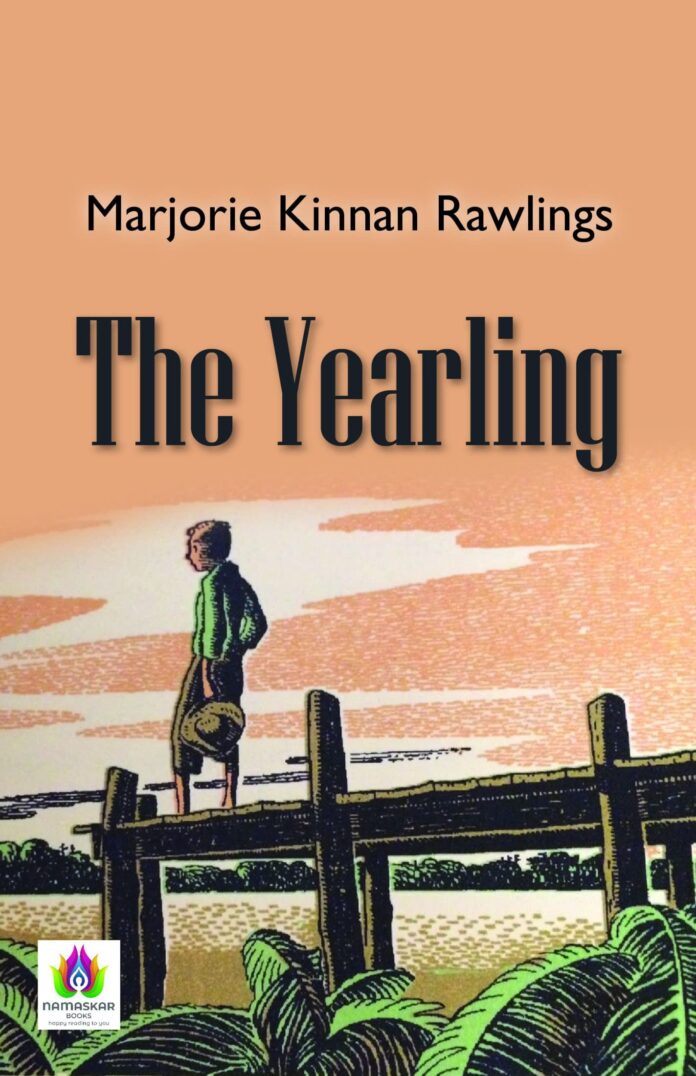In teh quiet corners of American literature, where childhood’s fleeting moments blend with the rawness of nature, marjorie Kinnan Rawlings’ The Yearling stands as a quietly enduring testament to innocence lost and found. Rediscovering Innocence: A Thoughtful Review of “The Yearling” invites readers to revisit this classic tale through a lens both reflective and fresh. As we turn the pages once more, we uncover the delicate interplay between youth and experience, survival and tenderness, set against the vivid backdrop of the Florida scrublands. This review aims not only to capture the spirit of Rawlings’ narrative but also to explore the deeper currents that continue to resonate long after the final chapter fades.
The Subtle Art of Childhood Loss Explored Through Rawlings’s Poignant Storytelling and Vivid Natural Imagery
This interplay is further enriched by Rawlings’s use of symbolism embedded within the surroundings, creating layers of meaning that resonate long after the last page is turned. An exploration of loss here isn’t just about sorrow; it’s an ode to resilience and the delicate balance of holding on and letting go. Key themes portrayed through vivid imagery include:
- Growth as a cyclical process akin to the seasons
- Innocence represented by the purity of untouched landscapes
- Connection between humans and nature as a source of comfort and understanding
| Element | Symbolic Meaning |
|---|---|
| Yearling deer | Childhood’s fragile innocence |
| Forest | Complexity of life’s challenges |
| River | Flow of time and emotion |
How The Yearling Captures the Complex Relationship Between Humans and Nature in a Rustic Southern Setting
In The Yearling, Marjorie Kinnan Rawlings paints a vivid portrait of life where the wilderness and humanity coexist with a delicate, often fragile balance. The rustic Southern setting isn’t merely a backdrop; it pulses with authenticity, from the dense, whispering forests to the warm, sun-dappled fields that cradle the Baxter family’s homestead. Through young Jody’s eyes, readers experience nature’s dual role as a nurturer and an unforgiving force-teeming with life yet marked by harsh reality. Rawlings encapsulates the paradox of a world where beauty and hardship are inextricably entwined, reminding us how deeply human existence is tied to the unpredictable rhythms of the natural surroundings.
The novel’s intricate exploration of this coexistence is reflected through themes that resonate universally:
- Trust and Dependency: The bond between Jody and the yearling, Flag, symbolizes an innocent faith in the natural world.
- Loss and Growth: As the young boy confronts the wilderness’s unforgiving lessons, maturation takes shape amidst sorrow and acceptance.
- Survival and Respect: Every interaction with nature demands both reverence and resilience, highlighting humanity’s contingency within broader ecosystems.
This fluid dynamic is what makes The Yearling a timeless reflection on the unpredictable partnership humans share with nature-one that neither conquers nor fully understands,but something to be navigated with empathy and humility.
| Element | Human-Nature Aspect | Symbolic meaning |
|---|---|---|
| Jody and Flag | Innocent Bond | Hope and Vulnerability |
| The Forest | Natural Environment | Life’s mystery and Danger |
| Hunting Scenes | Survival | Respect and Harsh Reality |
A deep Dive into the Emotional Growth of the Protagonist and the Universal Themes of Innocence and Maturity
At the heart of the narrative lies a journey of emotional awakening that mirrors the universal transition from innocence to maturity. The protagonist’s connection with nature, especially through his bond with the yearling, becomes a poignant metaphor for newfound responsibilities and the bittersweet sacrifices inherent to growing up. This evolution is subtly crafted, inviting readers to witness moments where childhood wonder coexists with the harsh truths of the adult world. The delicate balance between joy and sorrow serves as a compelling reminder that maturity frequently enough demands embracing loss without forsaking the vulnerability that defines youth.
The story deftly explores themes that resonate across time and geography, such as:
- the fleeting nature of innocence - encapsulated in fleeting, tender experiences before harsh realities intrude.
- Acceptance of change – the protagonist learns that growth involves both gain and inevitable letting go.
- Interdependence between humans and nature – highlighting harmony and conflict, nurturing and destruction.
These themes converge to create a rich emotional tapestry, where the protagonist’s struggles become a mirror for anyone navigating the precarious threshold between childhood and adulthood. the narrative’s universal appeal stems not only from its vivid depiction of personal growth but also from its ability to evoke empathy and reflection on the complexities inherent in leaving behind innocence.
Examining Rawlings’s Use of Symbolism and Foreshadowing to enhance the Narrative’s Emotional Impact

Rawlings masterfully wields symbolism throughout the narrative, enriching the reader’s emotional engagement by weaving deeper layers of meaning into seemingly simple elements. The yearling, for instance, is not just a young deer; it symbolizes Jody’s fragile grasp on childhood and innocence amidst the harsh realities of life.The wildlife, the changing seasons, and the unforgiving land itself serve as metaphors for growth, loss, and resilience-natural cycles that mirror the protagonist’s internal journey. This deliberate use of symbolism transforms ordinary moments into profound reflections on the human condition, inviting readers to explore the bittersweet dance between hope and hardship.
Foreshadowing in the novel acts as a subtle yet persistent undercurrent, gently guiding readers toward inevitable emotional climaxes without diminishing their impact. Through nuanced hints-be it a fleeting glance, a shift in tone, or the ominous quiet before a storm-Rawlings cultivates an atmosphere charged with anticipation.This technique not only heightens suspense but also deepens the narrative’s emotional resonance,allowing readers to experience the story’s joys and sorrows with amplified intensity. The careful balance between revealing and concealing future events keeps the engagement intimate and invested.
| Symbol | Meaning | Emotional Effect |
|---|---|---|
| The Yearling | Innocence & Childhood | Empathy & Nostalgia |
| Changing Seasons | Life’s Cycles | Hope & Melancholy |
| forests & Wilderness | Freedom & Danger | Tension & Wonder |
- Symbolism deepens the thematic richness beyond the surface narrative.
- Foreshadowing creates a tapestry of anticipation and emotional payoff.
- Both devices work in tandem to elevate the story’s poignancy and immersive quality.
The Role of Family Dynamics in Shaping the Narrative’s Tension and Heartfelt Moments
Rawlings crafts the family unit as more than just a backdrop; it becomes a living organism that mirrors the larger themes of survival and growth. The tension frequently enough arises not from external conflict, but from the intricate push and pull between parental guidance and childhood yearning, a dance delicately choreographed with empathy and realism. Consider the emotional spectrum in this simple breakdown:
| Family Role | Emotional Influence |
|---|---|
| Father | Discipline & Protection |
| Mother | Compassion & Understanding |
| Jody | Curiosity & Innocence |
- Conflicting desires between independence and family loyalty enhance the stakes.
- Moments of vulnerability reveal unspoken bonds that anchor the characters.
- The familial setting intensifies the reader’s empathy, making each heartfelt moment unforgettable.
Balancing Hope and Heartache: How The yearling Navigates Between Tenderness and Harsh Realities
through vivid descriptions and nuanced character development, Rawlings offers readers a delicate balance between warmth and sorrow. The book’s emotional rhythm moves with:
- Gentle empathy for youth and nature’s beauty,
- Unflinching honesty about life’s trials,
- Quiet resilience in the face of loss.
This balance is what breathes life into the story, keeping readers suspended between the desire to protect innocence and the acceptance of inevitable heartache. In many ways,it’s a poignant reflection of the human experience itself-teetering on the knife-edge of hope and hardship.
| Theme | Representation in the Novel | Emotional Impact |
|---|---|---|
| Innocence | Jody’s nurturing of flag, the fawn | Warmth, hope |
| Survival | Struggles with nature’s harshness | Tension, inevitability |
| Loss | Tragic turning points in the story | Heartache, growth |
Why The Yearling Remains a Timeless Classic in Coming-of-Age Literature and Nature Writing
At its core, this novel beautifully encapsulates the fragile transition from childhood to adulthood, capturing the complexities of growth with a delicate hand.Its protagonist’s journey is one marked by both wonder and hardship, presenting a nuanced portrayal of innocence lost but not forgotten. The narrative’s rich emotional tapestry resonates universally, reminding readers that coming-of-age is frequently enough a bittersweet blend of joy and sorrow. Rawlings’ masterful storytelling weaves these themes together, weaving natural world imagery into the emotional milestones of youth to create a symbiotic relationship between character and setting.
Beyond its emotional depth, the novel stands as a pioneering work in nature writing. It offers an immersive experience into the wilderness, portraying the environment not just as a backdrop but as a living character intertwined with human life.This evocative depiction invites readers to appreciate the subtle rhythms of the natural world and the lessons it imparts. The book’s lasting appeal can be attributed to several key elements:
- Authentic voice: rawlings’ firsthand knowledge imbues the story with genuine texture.
- Timeless themes: Family, resilience, and the bittersweet nature of growing up.
- Environmental consciousness: Early reflection on humanity’s relationship with nature.
- Emotional depth: Complex characters who embody universal struggles.
| Aspect | Why It Matters |
|---|---|
| Coming-of-Age Lens | Highlights universal rites of passage with emotional authenticity. |
| nature as Character | Transforms setting into a living entity influencing human fate. |
| Cultural Reflection | Captures early 20th-century rural American life with sensitivity. |
Practical Recommendations for Readers Seeking a Thought-Provoking and Emotionally Resonant Story
For those craving a narrative that gently unfolds the complexities of coming-of-age against a lush, natural backdrop, The Yearling delivers more than just a story-it offers a meditative experience. Readers who appreciate characters who grow with quiet dignity will find Jody Baxter’s journey deeply satisfying. Embrace the novel with an open heart, allowing yourself to be immersed in moments of both tender joy and poignant loss. This book invites you to reflect on the innocence we often take for granted and the bittersweet reality of growing up.
To intensify your connection with the story’s emotional layers,consider these practical tips:
- Engage with nature: If possible, read outdoors or near a window that frames the natural world, mirroring the book’s rural setting.
- Pause for reflection: Allow moments after key chapters to process the themes of family, survival, and change.
- Discuss or journal: Sharing insights or penning your thoughts can deepen your emotional resonance with the novel’s themes.
| Element | Why It Matters | Reader Benefit |
|---|---|---|
| Setting | Depicts the post-civil War southeastern wilderness | Creates a vivid backdrop for themes of innocence and survival |
| Character Development | Shows Jody’s evolution from naive boy to mature youth | Encourages empathy and personal reflection |
| Emotional Dynamics | Balances joy with sorrow and hardship | Provokes a heartfelt connection to universal human experiences |
Insights into The Yearling’s Influence on Contemporary Literature and Its Place in American Cultural history
Beyond literature, The Yearling stands as a cultural touchstone within American history, highlighting rural struggles during the early 20th century and the deep ties between people and the land. It captures an era when self-reliance and connection to nature formed the backbone of American identity-values that resonate in today’s eco-conscious and nostalgia-driven movements. The novel’s legacy extends into education,film adaptations,and folk art,reflecting its broad cultural footprint. Consider this breakdown of its multifaceted impact:
- Literary innovation: Deep psychological insight wrapped in rustic storytelling
- Cultural Reflection: Portrayal of early American rural life and family dynamics
- Environmental Connection: emphasis on nature’s role in shaping human experience
- Adaptations: Film, stage, and visual arts broadened its reach
| Aspect | Contemporary Echo | American Cultural Context |
|---|---|---|
| Theme | Loss of innocence, identity formation | Survival and adaptation in frontier society |
| Setting | Natural landscapes as characters | Expansion and rugged individualism |
| Characterization | Complex youth protagonists | Family ties and community bonds |
| Legacy | Inspiration for eco-literature | Cultural nostalgia and preservation |
How The Yearling’s Depiction of Rural Life Still Resonates with Modern Audiences
Rawlings masterfully captures the essence of rural life in a way that transcends time,illustrating not just the physical hardships but the emotional tapestry that shapes a young boy’s world. The depiction of the natural surroundings-the dense forests, sprawling fields, and subtle seasons-feels alive, almost breathing with the same rhythms we still find today. This nostalgic portrayal invites modern readers to reconnect with simpler moments of childhood and the inevitability of loss and growth that come with it. More than just an aesthetic backdrop, the rural setting becomes a character in itself, teaching resilience, respect for nature, and the bittersweetness of independence.
- Timeless themes: familial bonds and coming of age
- sensory immersion: vivid descriptions of environment and weather
- Emotional authenticity: genuine conflicts without romanticizing hardship
What cements the novel’s lasting appeal is its portrayal of innocence caught in the crossfire of reality. Jody’s relationship with the yearling reflects a universal confrontation between hope and heartbreak, familiar to anyone who has faced their own rites of passage. The rural life that Rawlings depicts is not just historical; it continues to resonate as an experience defined by both struggle and beauty. This duality is especially relevant today as readers seek meaning and connection beyond the noise of modern life, finding solace in the book’s quiet moments and natural allegories.
| Element | Modern Resonance |
|---|---|
| Coming of Age | Relatable emotional growth through challenges |
| nature’s Influence | Renewed interest in environmental awareness |
| Family Dynamics | Complex relationships speak to current social shifts |
Visualizing the southern Wilderness: The Yearling’s Setting as a Character in Its Own Right
The southern wilderness in the Yearling is more than just a backdrop-it pulses with life, shaping the narrative and mirroring the protagonist’s emotional landscape. This untamed environment, with its dense forests, winding creeks, and seasonal cycles, holds an almost mystical presence that influences every decision, joy, and hardship faced by Jody.The flora and fauna aren’t merely elements of scenery; they participate actively, almost like silent confidants and foreshadowing agents.The honeybees buzzing in the trees, the sudden rustle of a deer fleeing, or the oppressive summer heat all contribute to an immersive world where nature’s rules are absolute and unavoidable.
Key aspects of this living wilderness include:
- Interconnectedness: Every creature and plant plays a vital role, underscoring the fragile balance between survival and destruction.
- Seasonal symbolism: The shifting seasons parallel Jody’s transition from innocence to maturity, each marked by distinct natural challenges.
- Emotional resonance: The wilderness reflects the inner turmoil of the characters,offering solace or stark confrontation against their struggles.
| Natural Element | Symbolic Meaning | Narrative Impact |
|---|---|---|
| The yearling Deer | Innocence and vulnerability | Represents Jody’s childhood and loss of naivety |
| The Swamp | Mystery and danger | A place of both refuge and risk for the family |
| The Changing Seasons | Cycles of life and growth | Marks milestones in Jody’s maturation and family struggles |
Understanding Marjorie Kinnan Rawlings’s Unique Narrative Voice and Literary Legacy
Marjorie Kinnan Rawlings’s narrative voice is an evocative blend of lyrical simplicity and profound emotional depth. Through her masterful use of regional dialects and rich, sensory descriptions, she transports readers directly into the humid landscapes of rural Florida, where the rhythms of nature and human resilience intertwine. Her prose carries an almost poetic cadence, striking a delicate balance between innocence and the harsh realities of life. this unique voice elevates her storytelling, inviting readers to experience the world through the eyes of youthful wonder while never shying away from the bittersweet truths that define the human experience.
Rawlings’s literary legacy is anchored not only in her authentic portrayal of place and character but also in her unwavering commitment to exploring universal themes such as growth,loss,and the passage from childhood to maturity. Her narratives often feature:
- an intimate connection with nature, revealing both its nurturing and unforgiving facets.
- A focus on complex family dynamics, illuminating struggles of love, sacrifice, and survival.
- An undercurrent of moral ambiguity, prompting reflective contemplation rather than simple answers.
| Element | Characteristic | impact |
|---|---|---|
| Setting | florida backwoods | authentic sense of place |
| Language | Regional vernacular | Invokes cultural richness |
| Themes | Innocence, loss, resilience | Timeless emotional resonance |
In reflecting on Rawlings’s contributions, it becomes clear why her work endures: her ability to encompass the innocence of childhood entwined with the inevitable confrontations of reality creates a narrative that is both tender and unflinchingly honest. Each page is a testament to the power of voice in shaping how stories live on across generations.
In revisiting The Yearling, we are gently reminded of the delicate balance between childhood wonder and harsh reality-a dance that Rawlings captures with quiet grace. This timeless narrative invites readers to reflect on the innocence we once held and the inevitable growth that reshapes it. Whether approached as a nostalgic journey or a thoughtful contemplation on loss and love, The Yearling remains a poignant story that quietly lingers long after the final page. Rediscovering its pages is, in itself, an invitation to see the world anew through the eyes of innocence reclaimed.









